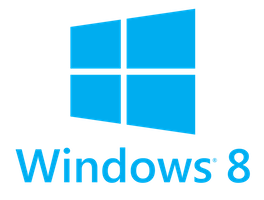Windows 8 Hits RTM – What You Should Do
On August 1, Microsoft announced that Windows 8 had been released to manufacturers (or RTM). While this is certainly not the biggest news to come along – it’s a good time to prepare for this new version of Windows. Windows 8 is going to be a rather big shift for computing in general, so this milestone also serves as a warning for all users. In many respects, you might find yourself having no choice but to use it, so this is a good time to get ready.
Test it, if you can. That’s right, Microsoft is fairly open about Windows beta versions. If you have the chance, and have a computer (or are willing to install a Virtual Machine) then you can get the Release Preview of Windows 8 here. Nothing will take the place of actual experience, so any time you spend with it will pay off later if you unexpectedly find yourself having to use it.
If you can’t test it, learn more about the Metro interface. Play with friend’s computers. Stop and check out a machine with it if you pass by in a Staples. Take the time to check out the way this new interface works. Some of the things you’re used to have changed in profound ways.
If upgrading, find out if your computers can run Windows 8. Microsoft will likely post a full and more detailed list of system requirements – but the best indicator for whether you’re computer will run Windows 8 is this blog post and general guideline for the consumer preview:
- 1 GHz or faster processor
- 1 GB RAM (32-bit) or 2 GB RAM (64-bit)
- 16 GB available hard disk space (32-bit) or 20 GB (64-bit)
- DirectX 9 graphics device with WDDM 1.0 or higher driver
Don’t like Metro? Here’s what you’ll be able to do. You won’t really be able to disable it, but you will be able to find ways to return the trusty Start button (and menu). As of this writing there is the Start8 tool, the ViStart tool, and Classic Shell. Certainly more will arrive as the release date of Windows 8 draws near. If you want the Start Menu back it should be possible.
Disable Aero on all machines. This is more of an aesthetic, but with Windows 8 also comes the demise of the Aero Glass interface of previous Windows versions. I would suggest that you go and disable aero on Windows 7 and Vista machines (if you have any) to make the interface as consistent as possible.
When the October 26th release date comes, you’ll be more interested in finding a Halloween costume than worrying about how this new version of Windows works. If you’re really dying to get it, make sure you check out the $39.99 upgrade offer. If you don’t want it, be sure to ask the hardware supplier if an earlier version can be installed. Voting with your money makes all the difference.


